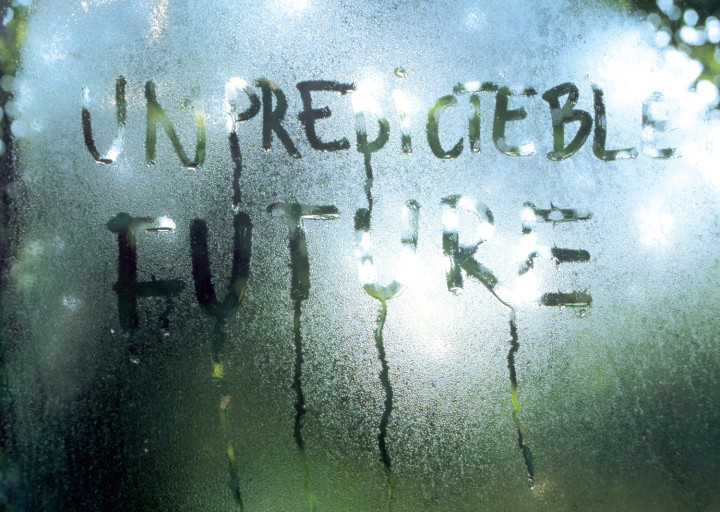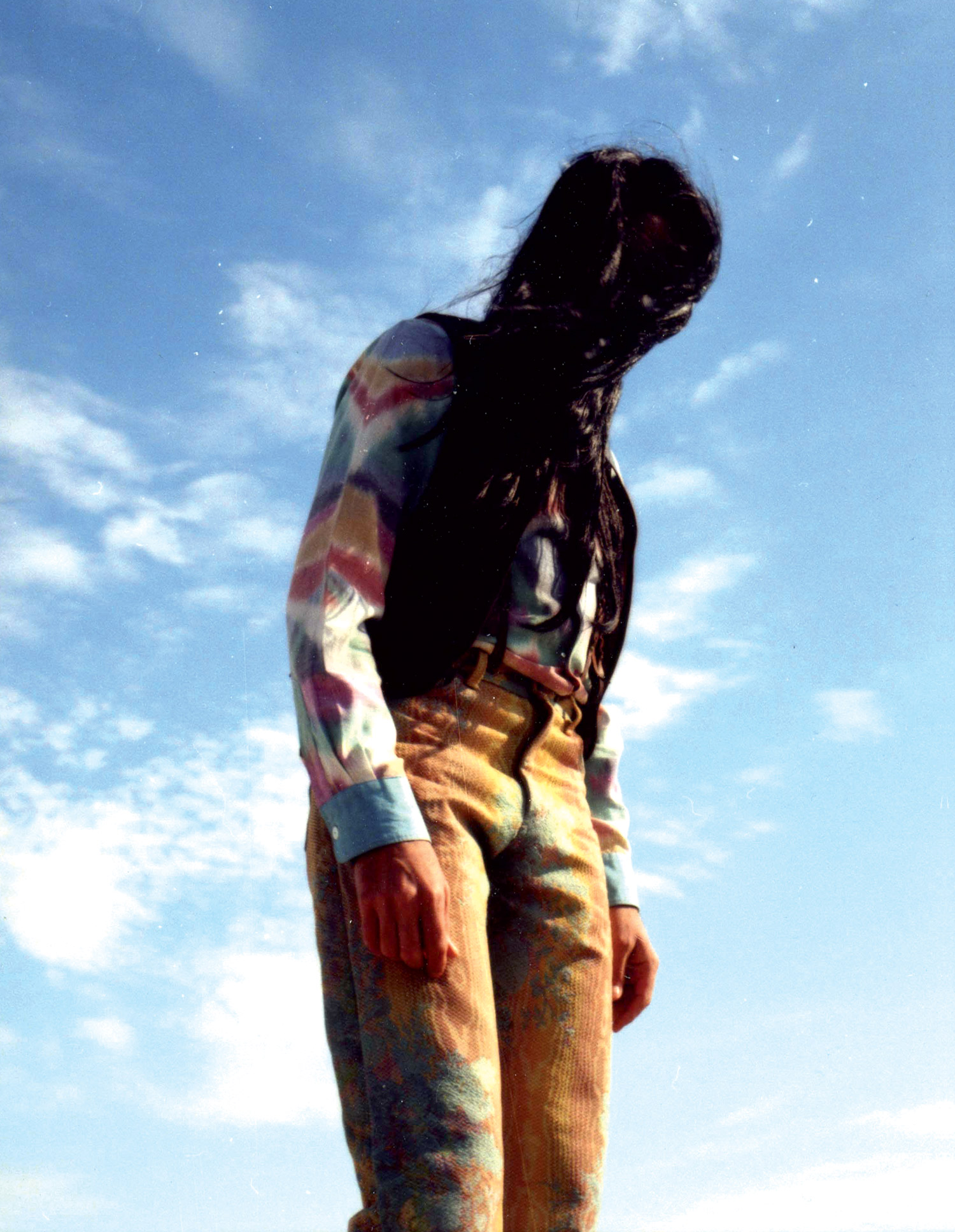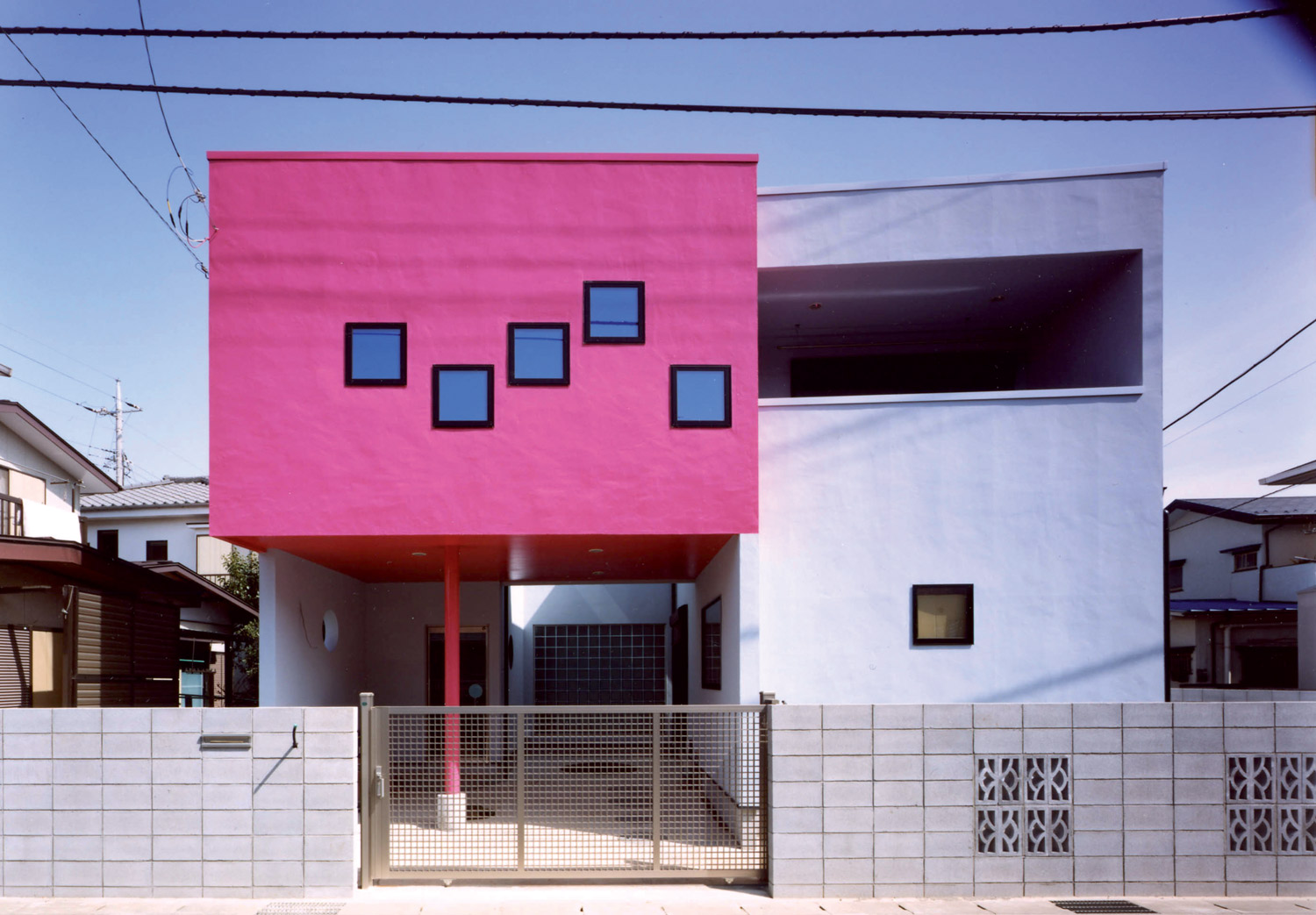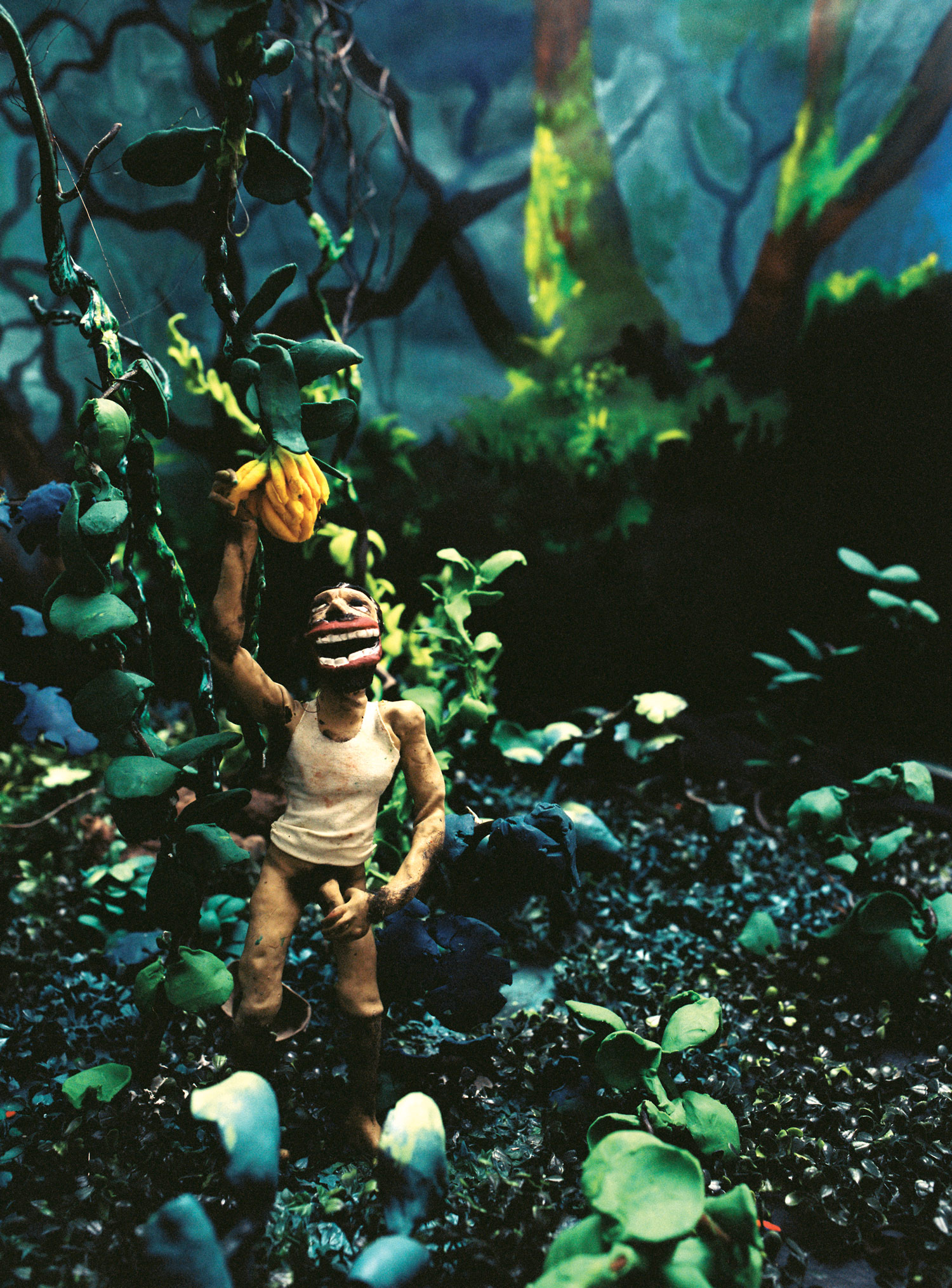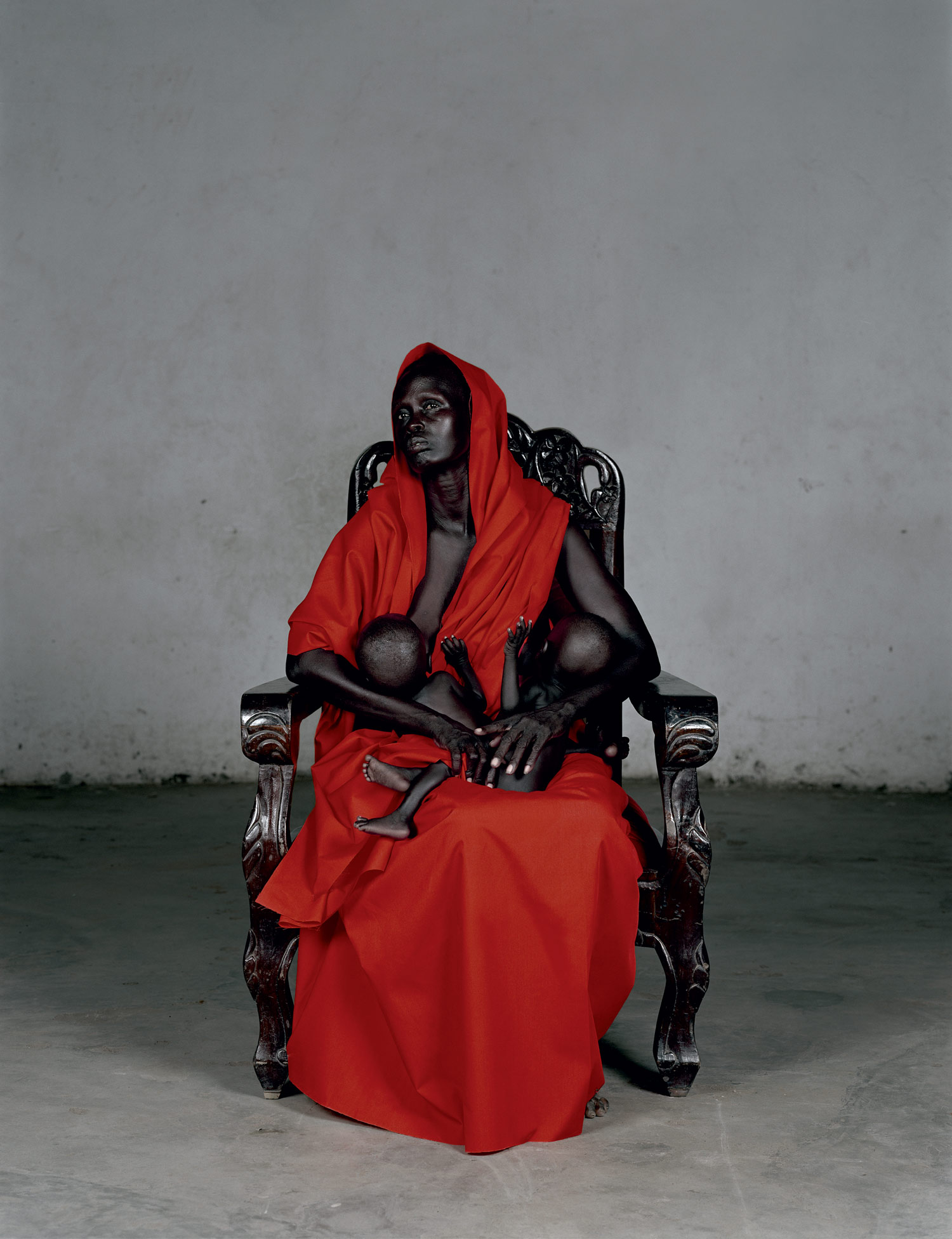
Alessandro Rabottini: What is this little map on one wall of your studio? It’s a drawing, a sort of web with the titles of all your works linked one to another…
Mircea Cantor: Sometimes people ask about the relation between one new work and what you did in the past, looking for linear correspondences. That’s why I need this map, it functions as a shortcut.
AR: Even if your work appears ‘open’ and not literal, in the end it seems you have a very precise idea of how it should be looked at. I’ve never heard you speak about your work in terms of content, but at the same time you seem to provide the viewer with a very clear angle of view.
MC: I don’t know… Maybe it has to do with my idea of production. I think that to make a ‘new’ solo show is actually to ‘remake’ it, in the sense that if I were invited to make a solo show today I would probably make it also with existing works. I feel that it is more important to establish relations among what I did in the past, instead of satisfying the equation new show = new work. I prefer to create a stage of re-presentation for some of my works.
AR: This has to do somehow with the current methods of production in the contemporary art world…
MC: We all criticize the culture of consumption, but we are all obsessed with the “what’s your next project” mantra. I’m now trying to find the way to be more ecological and economic in the context of my work. It all started when I did the show at Dvir Gallery in Tel Aviv, where I could experience a totally different way of “producing a new work.” And at the end I think that people met my work out of the cliché of the artist socially and politically engaged. It all began with some thoughts about how artists and their work can be destroyed by oblivion. The gallery was not allowed to release any press material, and I’m not going to tell you now about what was the work in the show, since it is all about the false idea of understanding one thing through its description — which is a form of destruction. I’m not even sure that that work is about viewing, but I’m sure that it exists right here and now since we are talking about it.
AR: The absence you’re talking about is very politically loaded…
MC: It is a form of personal response to a reality saturated with images. That’s why I decided to stop making photographs, because I don’t want to validate and multiply any further this visual reality. To put a conceptual value in a picture doesn’t prevent participation in the general pollution. I’m trying to experiment with a form of experience which is not bi-dimensional.
AR: Often you hear young artists talking about the ‘void.’ My impression is that today t he idea of void has more to do with the social and political agenda rather than being about a mystical value. It is interesting to hear you talk about trying to be absent, when you have often worked with communication tools like magazines, posters, serial objects, graphic design…
MC: I have in my hand a garlic dressed with an onion skin, and I think this is a good answer to your question. Both garlic and onion have a strong smell, and even with a camouflage like this they will remain very recognizable, they can’t avoid their peculiar nature.

AR: Don’t you see a sort of generational tendency among younger artists towards the dimension of emptiness, nothingness and vagueness?
MC: I don’t know what to say really. I’m just thinking about a piece I did in March 2003, when the Iraqi war was blowing up. I was in Thailand at that time, watching Saddam on CNN at midnight. Suddenly I realized the futility of all this mass-media spectacle. I mean, after three years we still don’t know what’s going on. So I just took a paper and wrote down “Forget all,” and I shot a video after that.
AR: In the end a lot of your works deal with the idea of the future, and I’m not just thinking of the piece Unpredicteble Future…
MC: Don’t you think that it is important for the world, in general, to think about the future? Especially in the art context… just open a magazine, it’s all referring the present to what has been done before. I’m not negating history and continuation with the past, and I don’t want to kill my fathers, but why should we automatically refer to Conceptual art when we talk about disappearance? We all know this, but every time that you repeat this, you create a redundancy.
AR: Is this because you don’t want to double reality?
MC: Call it as you want, I just want to take the new as new and not as a co-operation with the past. The present and the future have both to do with conceiving solutions, and we don’t want to do it. So art becomes like business or a love affair; one must continue using the old tricks that you learned in the past.
AR: Let’s speak of your video Deeparture: two animals are trapped in a gallery, and watching them you have the feeling of a permanent state of violence, but nothing bad happens. Danger is always there, and you can just wait for it and witness the absence of aggression. I’m talking about this because in the last decade a lot of art from Eastern Europe spoke of the local political troubles, but today the scene is mature enough to make a step forward.
MC: A key moment has come for Eastern-European art as it enters the realm of Western Art. Documenta X was the starting point for all these social and political issues. It was a crossroads for synchronizing East and West art. But art from Eastern Europe has always been the same, it has always been politically involved and engaged — here I think of the experiences of artists in the ’60s and ’70s in the underground or unofficial art. So, why does interest in these artists come up only now? And why is there so much interest today in Eastern-European artists who deal with Conceptualism and practices from the ’60s and the ’70s? It’s ironic in a way…

AR: Maybe that’s because art criticism often follows the mass-media agenda, in order to praise the press and the public.
MC: Certain people believe that to be synchronized with global trends they must follow certain paths, they must make the same steps or mistakes.
AR: I’m aware of the risk of exploiting cultural identities through their stereotypes, but I’d like to know more about your cultural origins.
MC: Well, I come from Romania, which means Communism in the past, sixteen years of transition, now the attempt to enter the EU empire, low-cost labor and so on… but what is important in order to avoid the exoticism is to be aware of the situation. When I use certain themes derived from my culture, I don’t want to export pain, but to stress the fact that what happened there and still happens elsewhere, can be described as part of a universal language.
AR: To verbalize your work is sometimes very hard, and despite this difficulty still most of your works remain effective on the level of consciousness, empathetically. They infiltrate the viewer’s perception like weather phenomena: you can’t help but recognize them on your skin, even though it’s hard to explain them.
MC: It’s beautiful what you say. I think that today, to write something about one’s work is easy. It’s more difficult to refuse or to keep the silence. And it is much more difficult to understand, talk and communicate about one’s work. Nowadays the term communication is one of the most abused. But now we are getting too serious and it’s not good...

